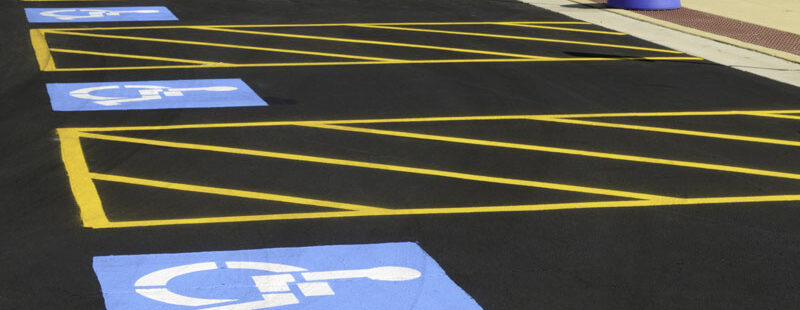
- min min
- No Comments
- October 12, 2025
Cold Lay Tarmac: The Smart Choice for Quick, Cost-Effective Repairs
Maintaining smooth, safe surfaces for access roads, car parks, driveways, pathways, or minor highway defects often requires a fast, dependable solution. That’s where cold lay tarmac comes in — a ready-to-use, no-heat asphalt product that offers flexibility, convenience, and performance when traditional hot-mix surfacing isn’t practical.
In this article, we’ll explore what cold lay tarmac is, when and why it’s used, advantages and limitations, best practices, and how you can get high-quality repairs using it.
What Is Cold Lay Tarmac?
Cold lay tarmac (sometimes called “cold mix asphalt”) is an asphalt mixture manufactured at ambient temperature rather than being heated. It’s formulated so that the binder and aggregates adhere without needing high temperatures, often using additives or emulsion binders to maintain workability and flexibility.
Because it doesn’t need hot-plant production or reheating on site, cold lay tarmac is particularly suited for patching, maintenance repairs, and small-scale resurfacing in areas where hot-mix access is difficult or frequent closures are not feasible.
When to Use Cold Lay Tarmac
Cold lay tarmac is particularly suitable for the following scenarios:
- Pothole repairs and patching — when localized damage needs fast attention
- Interim or temporary repairs — for fixing defects while waiting for full resurfacing
- Low-traffic drives, trails or private access roads — where loads are moderate
- Repairs in cooler weather / winter months — when hot-mix plants might be closed or less efficient
- Small areas where hot-mix plant mobilization is uneconomical
In contrast, for high-volume trunk roads or full resurfacing of large motorways, traditional hot-mix overlay is often more appropriate. But cold lay tarmac plays a vital role in keeping surfaces functional between major works.
Advantages of Cold Lay Tarmac
1. No Heating, No Plant Required
Because it’s used at ambient temperature, you don’t need specialized heating or continuous operations of asphalt plants onsite. This reduces equipment and setup costs and simplifies logistics.
2. Quick Application & Minimal Downtime
Repairs using cold lay tarmac can often be done quickly, even while traffic is present (in limited cases). Surfaces can be opened faster, reducing disruption to users.
3. Ease of Use
Cold lay tarmac is relatively straightforward to apply. Crews don’t need to manage high temperatures, which can reduce the risks of burns and handling difficulties. It’s a more forgiving material to work with in tight spaces or tricky locations.
4. Year-Round Workability
Unlike hot-mix asphalt, cold lay can be applied in cooler temperatures and is less sensitive to weather conditions. This makes it especially useful during colder seasons or unpredictable climates.
5. Cost-Effective for Small Jobs
For small patches and local repairs, deploying full hot-mix machinery can be overkill. Cold lay tarmac offers a more economical solution, particularly for owners, councils, or smaller surfacing firms.
Limitations & Considerations
While cold lay tarmac has many strengths, it does come with some limitations you should keep in mind:
- Durability under heavy traffic: In areas with heavy, constant traffic loads, cold lay mixes may deteriorate faster than hot-mix alternatives if not properly designed.
- Depth and thickness constraints: Cold lay is often used in relatively shallow repair zones; deep structural overlay may not be suitable.
- Quality & manufacturer variability: The performance depends heavily on the mix formulation and quality control. Not all cold lay products are equal.
- Long-term performance: For large-scale resurfacing projects, cold lay is often seen as a maintenance or interim solution rather than a permanent surface in high-stress zones.
Successful use depends on matching the product and method to the application requirements.
Best Practices for Working with Cold Lay Tarmac
To ensure reliable, robust repairs using cold lay tarmac, follow these guidelines:
Clean & prepare the repair area
- Excavate to sound material, remove debris, potholes, and weak zones
- Ensure vertical faces are neat and the repair zone is stable
- Dry the area, if possible, before applying material
Apply in lifts / layers for deeper patches
- If the defect depth is more than ~50–70 mm, apply in lifts rather than all at once
- Compact each lift properly before adding the next
Choose the right product & mix
- Select a reputable cold mix product suitable for the intended traffic load
- Consider rejuvenators, polymers, or additives if heavier loads are expected
Use proper compaction
- Use a mechanical roller or vibrating plate compactor to achieve density
- Compaction is critical to strength, surface smoothness, and resistance to water ingress
Edge sealing & finishing touches
- Seal vertical faces or joints to reduce moisture ingress
- Smooth the final surface for rideability and drainage
Post-maintenance checks & monitoring
- Monitor patched zones periodically for cracking or settling
- Plan for further intervention or full resurfacing when necessary
If followed, these steps help cold lay tarmac deliver durable, fast, and effective repairs.
Cold Lay Tarmac vs. Hot-Mix Tarmac
| Feature | Cold Lay Tarmac | Hot-Mix Tarmac |
|---|---|---|
| Production Temperature | Ambient / Moderate | High temperatures (heated plant) |
| Plant Requirement | Not required on-site | Requires hot-mix plant / heating equipment |
| Application Speed | Fast, minimal setup | Slower logistics, longer prep |
| Suitability | Patch repairs, low to moderate traffic | Full resurfacing, heavy traffic zones |
| Weather Sensitivity | Usable in cooler weather | Better in warm, dry conditions |
| Durability (in heavy use) | Moderate, dependent on mix | High, designed for long-term load stress |
Both have their place in a comprehensive surfacing strategy. Cold lay is especially valuable when speed, access, or weather constraints are in play.
Use Cases & Examples
- A private estate experiences multiple potholed spots each winter. Deploying cold lay tarmac enables quick repairs without mobilising large plants.
- A shopping centre car park wants to maintain smooth access in between full resurfacing. Cold lay patches keep surface integrity intact until the next scheduled upgrade.
- A rural access road has small defects but limited budget. Cold lay tarmac offers a practical, cost-effective maintenance option without large-scale works.
- Municipal maintenance teams use cold lay during wetter months when hot-mix production is less reliable, to stay responsive to urgent defect repairs.
These examples show how cold lay tarmac fills a useful niche between reactive maintenance and full resurfacing.
Why Choose a Professional Contractor
While cold lay tarmac is simpler to work with than hot-mix, achieving durable, high-quality results still demands know-how, quality materials, and precision:
- Experienced teams understand compaction techniques, material behavior, and optimal mix selection.
- Quality control ensures you get consistent results, avoiding weak patches or early failure.
- Access to good materials ensures performance matches expectations, especially for heavier loads or demanding environments.
- Planning & site management minimizes disruption and ensures safety during repair works.
If you’re considering maintenance or repair works using cold lay tarmac, working with a professional surfacing contractor ensures your investment lasts longer and performs better.
Getting Started: Request a Quote
If you’ve got potholes, surface damage, or want to plan preventative maintenance, cold lay tarmac may be the efficient, cost-effective solution you’re looking for.
To discuss your project, get technical input, or receive a tailored quote, reach out to us directly. Contact us here and let our team assess how cold lay applications can keep your surfaces safe, smooth, and long-lasting.





